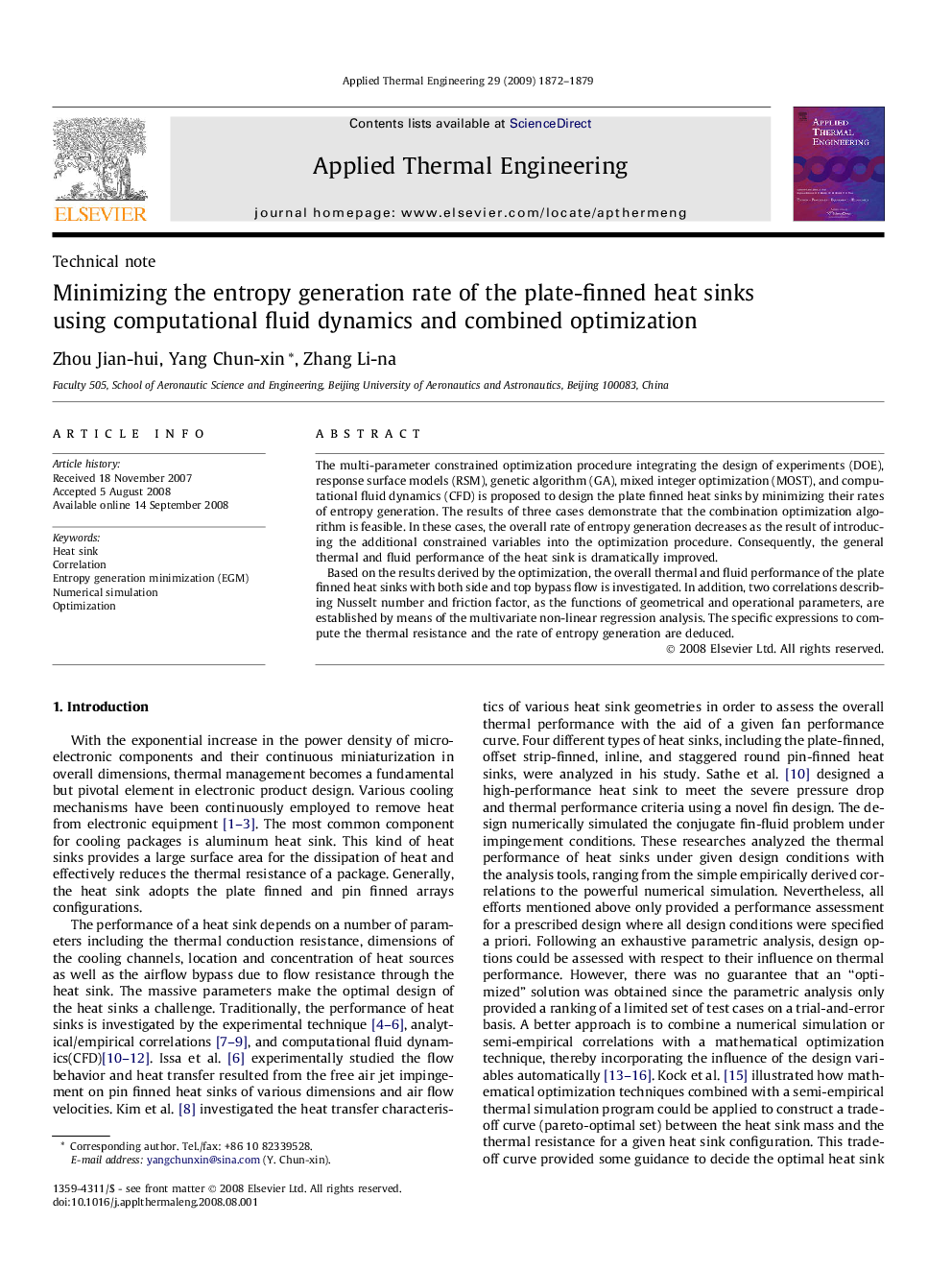| Article ID | Journal | Published Year | Pages | File Type |
|---|---|---|---|---|
| 648757 | Applied Thermal Engineering | 2009 | 8 Pages |
The multi-parameter constrained optimization procedure integrating the design of experiments (DOE), response surface models (RSM), genetic algorithm (GA), mixed integer optimization (MOST), and computational fluid dynamics (CFD) is proposed to design the plate finned heat sinks by minimizing their rates of entropy generation. The results of three cases demonstrate that the combination optimization algorithm is feasible. In these cases, the overall rate of entropy generation decreases as the result of introducing the additional constrained variables into the optimization procedure. Consequently, the general thermal and fluid performance of the heat sink is dramatically improved.Based on the results derived by the optimization, the overall thermal and fluid performance of the plate finned heat sinks with both side and top bypass flow is investigated. In addition, two correlations describing Nusselt number and friction factor, as the functions of geometrical and operational parameters, are established by means of the multivariate non-linear regression analysis. The specific expressions to compute the thermal resistance and the rate of entropy generation are deduced.
